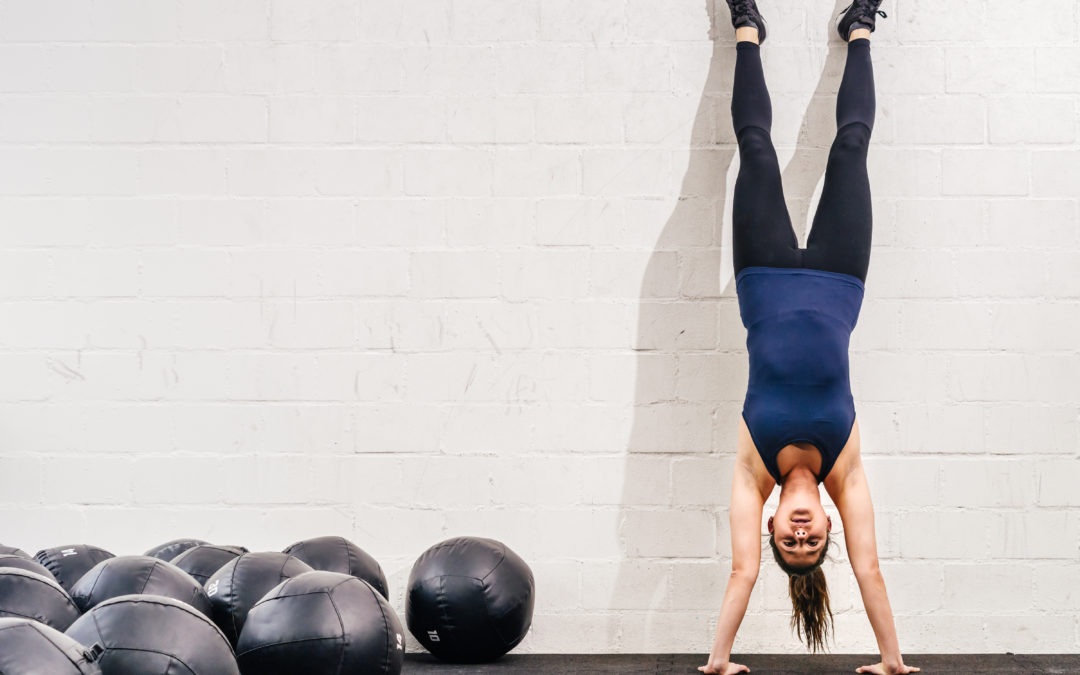Learning to do a handstand as an adult is providing me with some interesting – and at times frustrating! – reminders about what it is like to learn something new.
I have been reminded that not all goals, and definitely not all practice is equal. Even when learning to do handstands.
Let me explain.
I recently set myself a goal which I did not achieve, which was to be able to do a 30-second handstand before a
certain big birthday.
Despite attending my gym regularly and doing exercises which appeared to be helpful, I have not yet done
a 30 second free-standing handstand.
Why not?
Firstly, you might ask: why bother at all? True.
But it seems like a fun if random party trick and lots of people at my gym can do mighty perfect handstands. So,
I’d like to do one too. (Just so you can see I am not totally crazy, click here to ‘how to’ videos … I am not alone!)
Besides: how hard can it be? I could do one as a kid and it looks easy enough for someone who is reasonably fit.
Given I am strong enough, at the beginning it didn’t seem that hard.
So, having decided that I’d like to do it, I didn’t break the task into chunks. Nor did I take it seriously enough
to set mini deadlines and measure my progress against them and trigger those dopamine hits that I mentioned in a recent post.
I did make progress and am proud to report that I can consistently do a handstand if I take a bit of a walk up and a skip before hurling my feet skyward. I can also hold that position for a few seconds (especially if I know there is a soft mat for me to fall onto when I am ready).
This was an easy cop out, though.
After all, I could do a handstand of sorts for the first time in decades.
But … is it what I had set out to achieve?
Nope. And I knew I was kidding myself.
It wasn’t what I wanted and was becoming disillusioned. Why could ‘everyone else’ do this and not me? Am I not strong enough? Am I not flexible enough? Why can’t I do this thing that I could do as a kid?
I had persisted and practiced for a long time and not progressed as far as I would like.
It turns out that not all kinds of practice are equal. Repeating the same thing the wrong way in no way improved
my ability.
Given my gym instructor is both friendly and knowledgeable, I decided to actually ask him what to do and listen to his advice.
The first thing, he assures me, is to stop trying to do the handstand as a whole. Focus on micro skills instead.
The next thing is to get my balance right. To balance the majority of my weight not on the heel of my hand as I was doing, but smack bang in the centre of the palm. This week I achieved this for the first time and boy, it felt good.
Not a full handstand but measurable, definite progress. And now that I know what it feels like, I will be able to do it again.
Not only that, one of my gym buddies commented on ‘the nice line’ I had created as I was upside down practicing my stance with my feet against a pole.
Thank you, dopamine.
My instructor tells that I also need to increase my shoulder, hip and hamstring flexibility so that I can elevate my legs smoothly and without curving my back. This will help me create and hold a line with much less effort. And that would probably happen faster if I spend less time at a keyboard. Of course he said that!
I have made progress here too (not with the keyboard part!) and will keep at it until he says I should try again.
My hope now is that this mix of purposeful practice based on guidance from someone who knows more than me, micro success and a tiny bit of positive feedback will keep me on track until I do succeed in getting my feet properly skyward.
So, crazy I might be, but I am now enjoying learning to do a handstand, and also learning more about learning.
What new learning challenges have you set yourself lately?
If building your professional communication skills is on the list, check out how I can help you turn your communication skills into a career-boosting asset.
– My latest books, Elevate and Engage
– My online courses, helping you communicate complex ideas
– My free 10 Minutes to Better emails course
Caveat – this picture is aspirational! It is not me!

PRESENTED BY DAVINA STANLEY
I love what I do.
I help senior leaders and their teams prepare high-quality papers and presentations in a fraction of the time.
This involves 'nailing' the message that will quickly engage decision makers in the required outcome.
I leverage 25+ years' experience including
- learning structured thinking techniques at McKinsey in Hong Kong in the mid 1990s before coaching and training their teams globally as a freelancer for a further 15 years
- being approved to teach the Pyramid Principle by Barbara Minto in 2009
- helping CEOs, C-suite leaders and their reports deeply understand their stakeholder needs and communicate accordingly
- seeing leaders cut the number of times they review major papers by ~30% and teams cut the amount of time they take to prepare major papers by ~20%*
- watching senior meetings focus on substantive discussions and better decisions rather than trying to clarify the issue
My approach helps anyone who needs to engage senior leaders and Boards.
Recent clients include 7Eleven, KPMG, Mercer, Meta, Woolworths.
Learn more at www.clarityfirstprogram.com
(*) Numbers are based on 2023 client benchmarking results.


